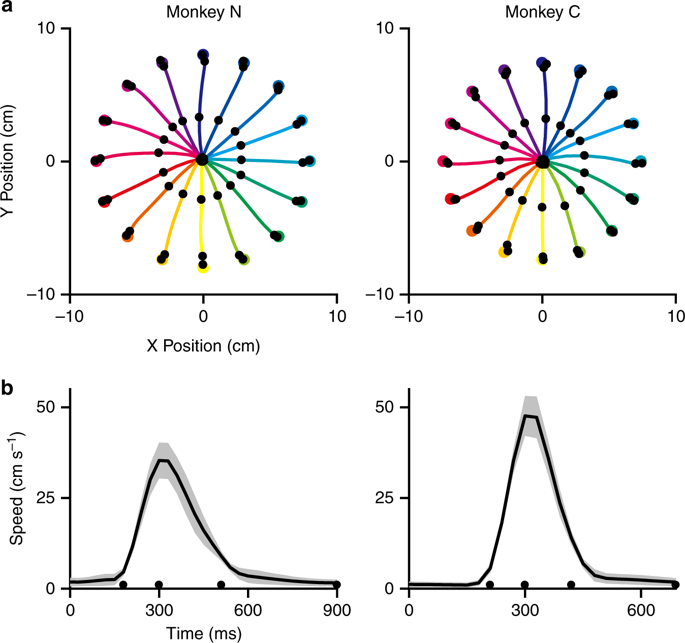当前位置:
X-MOL 学术
›
Nat. Commun.
›
论文详情
Our official English website, www.x-mol.net, welcomes your
feedback! (Note: you will need to create a separate account there.)
Decoding arm speed during reaching.
Nature Communications ( IF 14.7 ) Pub Date : 2018-12-07 , DOI: 10.1038/s41467-018-07647-3 Yoh Inoue , Hongwei Mao , Steven B. Suway , Josue Orellana , Andrew B. Schwartz
Nature Communications ( IF 14.7 ) Pub Date : 2018-12-07 , DOI: 10.1038/s41467-018-07647-3 Yoh Inoue , Hongwei Mao , Steven B. Suway , Josue Orellana , Andrew B. Schwartz

|
Neural prostheses decode intention from cortical activity to restore upper extremity movement. Typical decoding algorithms extract velocity-a vector quantity with direction and magnitude (speed) -from neuronal firing rates. Standard decoding algorithms accurately recover arm direction, but the extraction of speed has proven more difficult. We show that this difficulty is due to the way speed is encoded by individual neurons and demonstrate how standard encoding-decoding procedures produce characteristic errors. These problems are addressed using alternative brain-computer interface (BCI) algorithms that accommodate nonlinear encoding of speed and direction. Our BCI approach leads to skillful control of both direction and speed as demonstrated by stereotypic bell-shaped speed profiles, straight trajectories, and steady cursor positions before and after the movement.
中文翻译:

到达时解码手臂速度。
神经假体将皮层活动的意图解码,以恢复上肢运动。典型的解码算法从神经元激发速率中提取速度(具有方向和大小(速度)的矢量)。标准解码算法可以准确地恢复手臂方向,但是事实证明,提取速度更加困难。我们证明了这种困难是由于速度是由单个神经元编码的方式造成的,并证明了标准的编码解码程序如何产生特征错误。这些问题可以通过使用替代性的脑机接口(BCI)算法来解决,该算法可适应速度和方向的非线性编码。我们的BCI方法可熟练控制方向和速度,如刻板的钟形速度曲线,笔直的轨迹,
更新日期:2018-12-07
中文翻译:

到达时解码手臂速度。
神经假体将皮层活动的意图解码,以恢复上肢运动。典型的解码算法从神经元激发速率中提取速度(具有方向和大小(速度)的矢量)。标准解码算法可以准确地恢复手臂方向,但是事实证明,提取速度更加困难。我们证明了这种困难是由于速度是由单个神经元编码的方式造成的,并证明了标准的编码解码程序如何产生特征错误。这些问题可以通过使用替代性的脑机接口(BCI)算法来解决,该算法可适应速度和方向的非线性编码。我们的BCI方法可熟练控制方向和速度,如刻板的钟形速度曲线,笔直的轨迹,











































 京公网安备 11010802027423号
京公网安备 11010802027423号